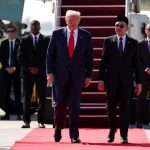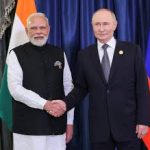
Nearly two weeks after the impasse over the Chinese troops’ incursion into Ladakh, India and China are showing signs of flexibility to defuse tensions, with Indian Prime Minister Manmohan Singh saying the two sides are working on a plan to resolve this contentious issue.
“We do have a plan. We do not want to accentuate the situation,” Manmohan Singh said on the margins of a function at Rashtrapati Bhavan, the red sandstone presidential palace located in the heart of the Indian capital. “We do believe that it is possible to resolve this problem. It is a localised problem. I think the talks are going on,” he stressed.
The prime minister’s conciliatory tone on the latest bout of Chinese incursions indicates that the two sides are ready for a mid-way compromise to resolve the deadlock that is proving plenty of fodder to hawks on both sides of the fence.
The incursion, seen as the most brazen in recent times, has revived suspicions of the China threat among the diplomatic-strategic community in the country. On April 26, the Indian government cleared the air, saying the Chinese troops had pitched tents 19 km deep inside the Indian territory in Ladakh region on April 15. This is perhaps the first time Indian and Chinese troops have been in a face-to-face situation for around two weeks. The two flag meetings between border personnel and a slew of telephonic talks between officials heading a joint border mechanism have failed to break the impasse. With both sides working the phones and displaying signs of accommodation, well-placed sources say that a deal may be struck before India’s Foreign Minister Salman Khurshid travels to Beijing May 9.
The extent of the Chinese incursion, and its timing before a planned visit of the new Chinese premier to New Delhi, has taken China-watchers in India by surprise. There seems to be disconnect between the top civilian leadership in China and the military establishment, specially border personnel, Srikanth Kondappali, a China expert at Jawaharlal Nehru University, told India Writes Network. The message from the top leadership about building stronger India-China relations has not filtered down to local troops, says Kondapalli.
After first denying that the Chinese troops trespassed into the Indian territory, China’s foreign office is now banking on “wisdom and maturity” of the two countries to resolve the issue. China’s Foreign Ministry spokesperson Hua Chunying told reporters in the Chinese capital Beijing April 26 that both countries had maintained “close communication” over boundary-related issues. She stressed that China believed the problems could be solved through “friendly consultation”. “I want to stress here once again the two countries have maintained close communication on border issues, and both countries, we also believe, have the capacity and wisdom to solve the issue through friendly consultations, so as to maintain peace and stability in border areas.”
The incident has underlined the need to revisit the existing CBMs related to the Line of Actual Control, which serves as the de facto border between India and China, and to bolster the joint border mechanisms so that incursions or transgressions can be dealt speedily to prevent them from escalating into diplomatic flashpoints.
India’s foreign minister announced his visit to Beijing in the middle of the intensifying border row, indicating New Delhi’s desire to ensure that Chinese Premier Li Keqiang’s visit to New Delhi, likely May 20, is not overshadowed by negative media hype surrounding the recent incursion.
For now, despite influential hawks in both camps, the new spirit of pragmatism and the upcoming visit of the Chinese premier will ensure that the two Asian powers will indeed find wisdom and maturity to get the incursion issue out of the way and turn their energies and enterprise to more weightier issues like reviving the global economy and expanding areas of convergence in the international arena. Many substantive issues like the ballooning trade deficit need serious diplomatic attention to revitalise this relationship, where economic interests have tended to offset differences on issues like the border. China has emerged as India’s largest trading partner, with both sides looking to scale up bilateral trade from around $70 billion to $100 billion by 2015. India’s trade deficit is estimated to be around $40 billion. If the $100 billion target has to be achieved, one can only hope that incursion is only “an acne,” in memorable words of India’s foreign minister, which could be cured so that the two adults can get down to some serious business that impact the lives and fortunes of people in both countries.
Author Profile

- Manish Chand is Founder and Editor-in-Chief of India Writes Network (www.indiawrites.org) and India and World, a pioneering magazine focused on international affairs. He is CEO, Centre for Global India Insights, an India-based think tank focused on global affairs.
Latest entries
 India and the WorldOctober 27, 2025Modi hails the century of India and ASEAN, backs ASEAN centrality
India and the WorldOctober 27, 2025Modi hails the century of India and ASEAN, backs ASEAN centrality India and the WorldOctober 26, 2025Act East: Five reasons why ASEAN summit in Malaysia matters
India and the WorldOctober 26, 2025Act East: Five reasons why ASEAN summit in Malaysia matters India and the WorldOctober 25, 2025Malaysia Summit: India can play a bigger role in ASEAN: Anil Wadhwa
India and the WorldOctober 25, 2025Malaysia Summit: India can play a bigger role in ASEAN: Anil Wadhwa India and the WorldOctober 2, 2025With US frowning, India to host Putin in December
India and the WorldOctober 2, 2025With US frowning, India to host Putin in December







